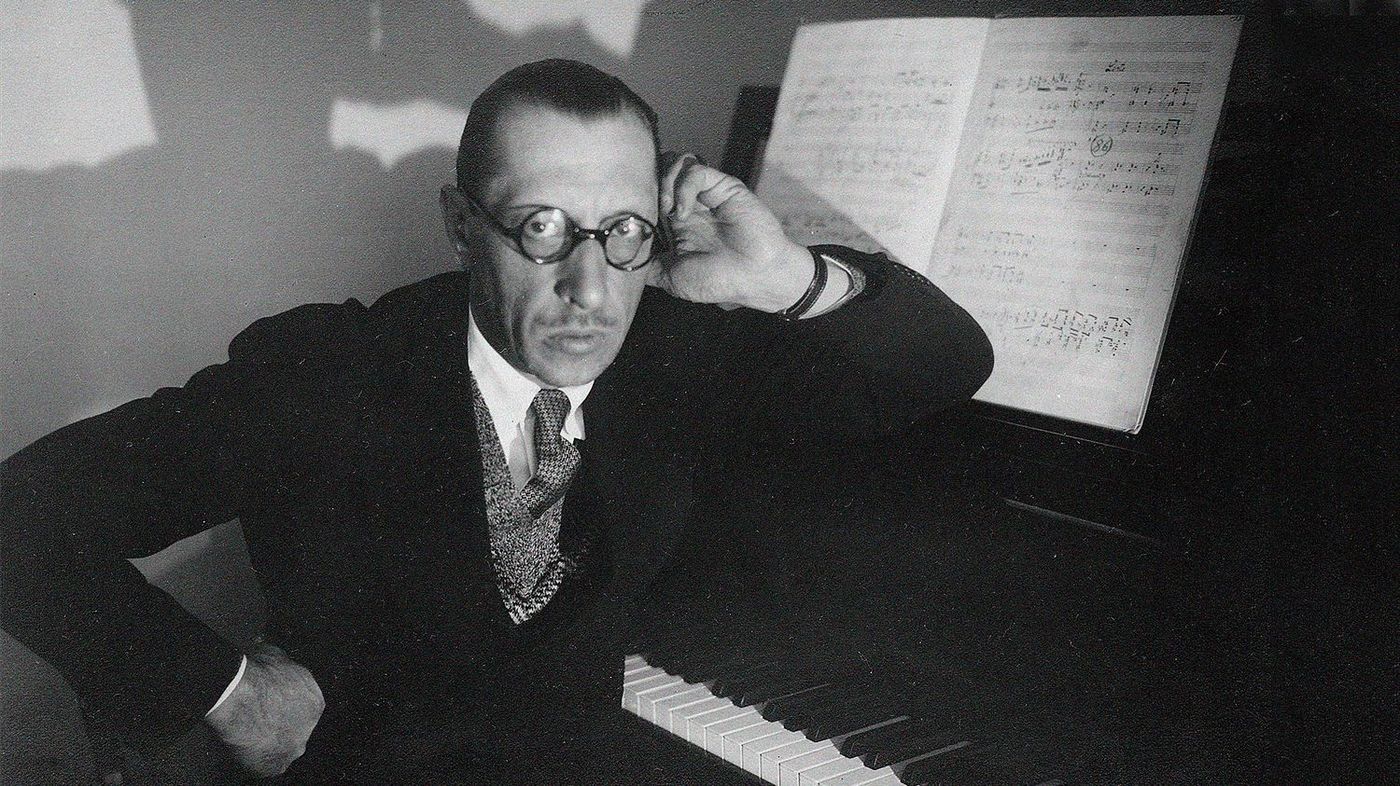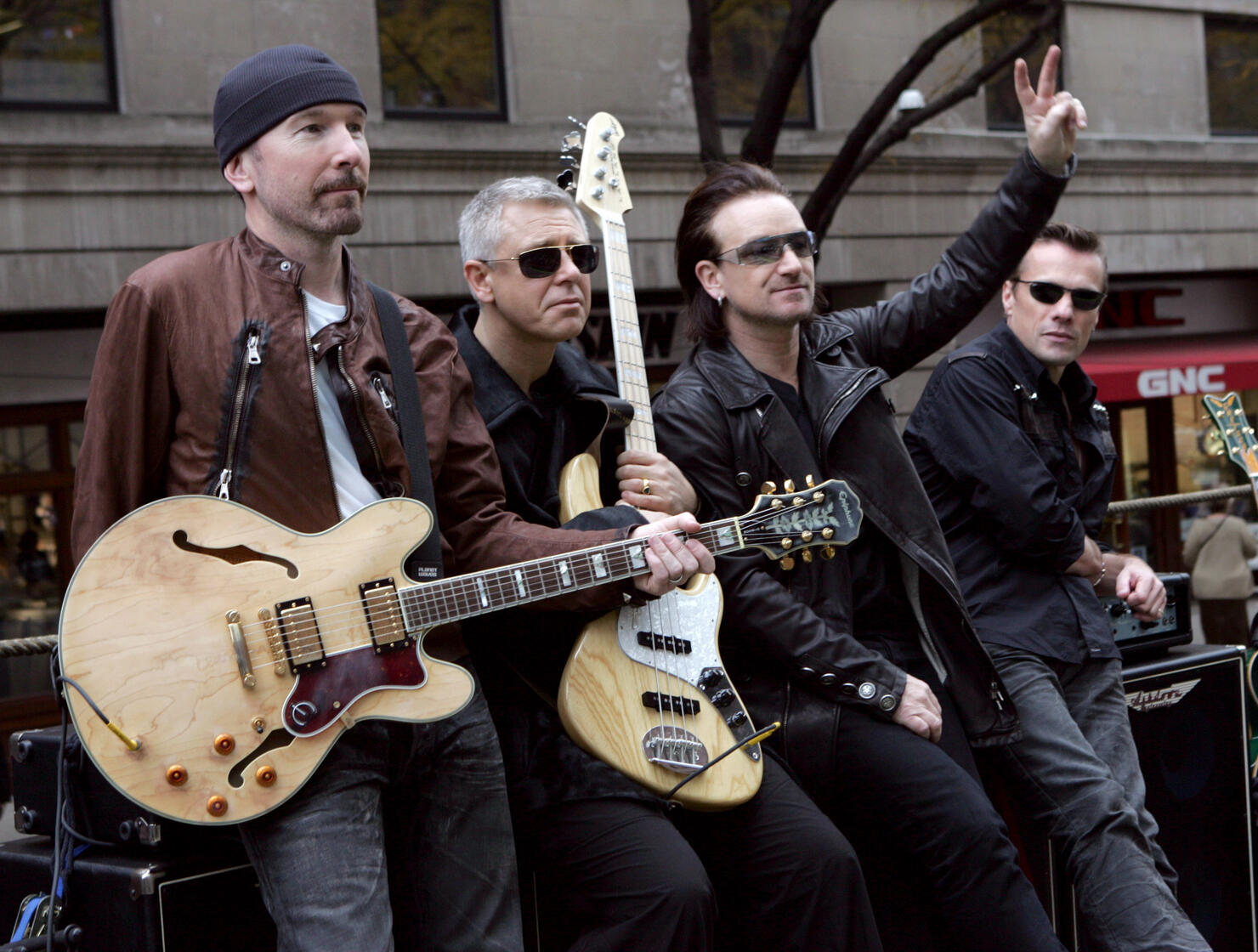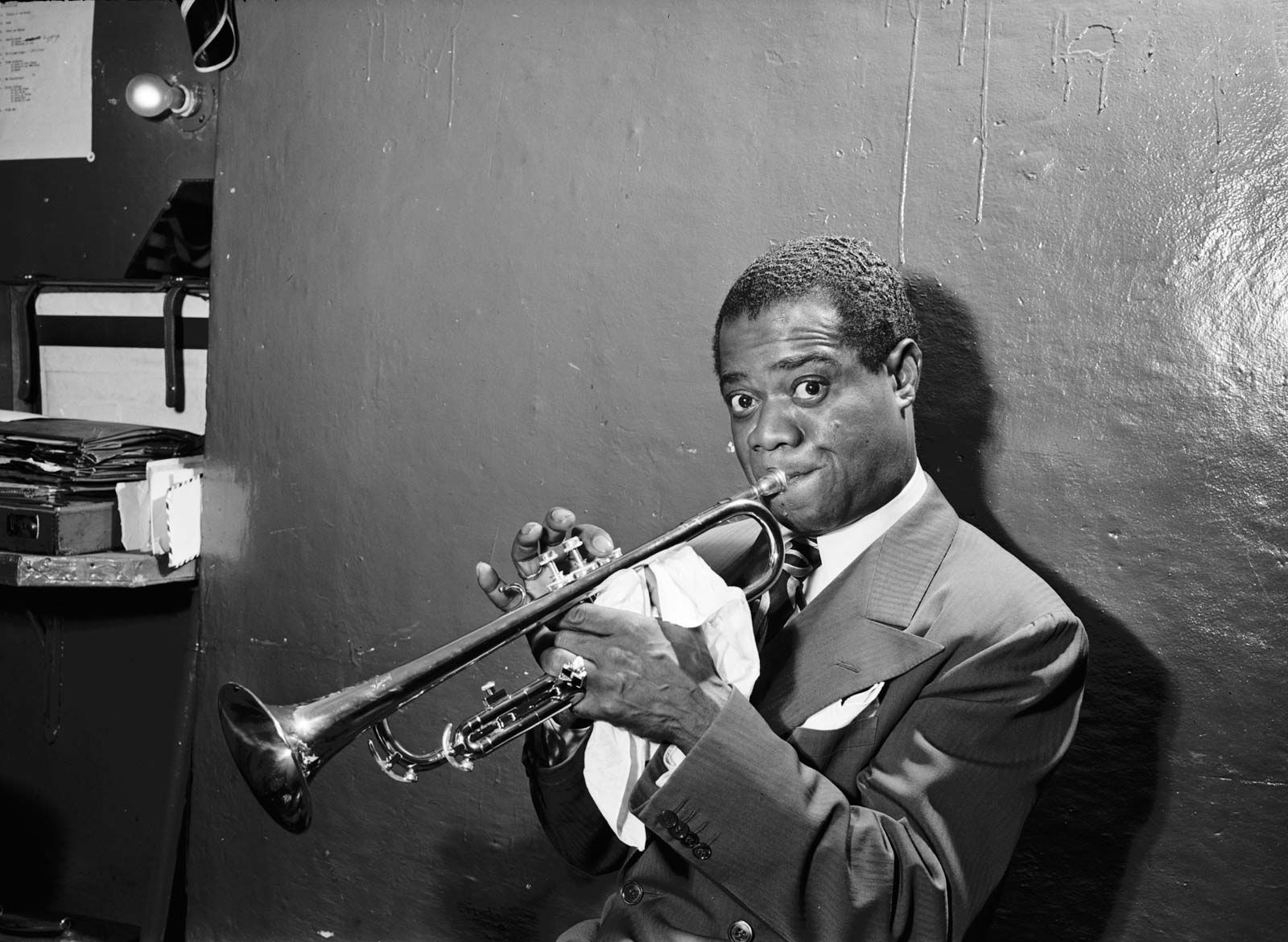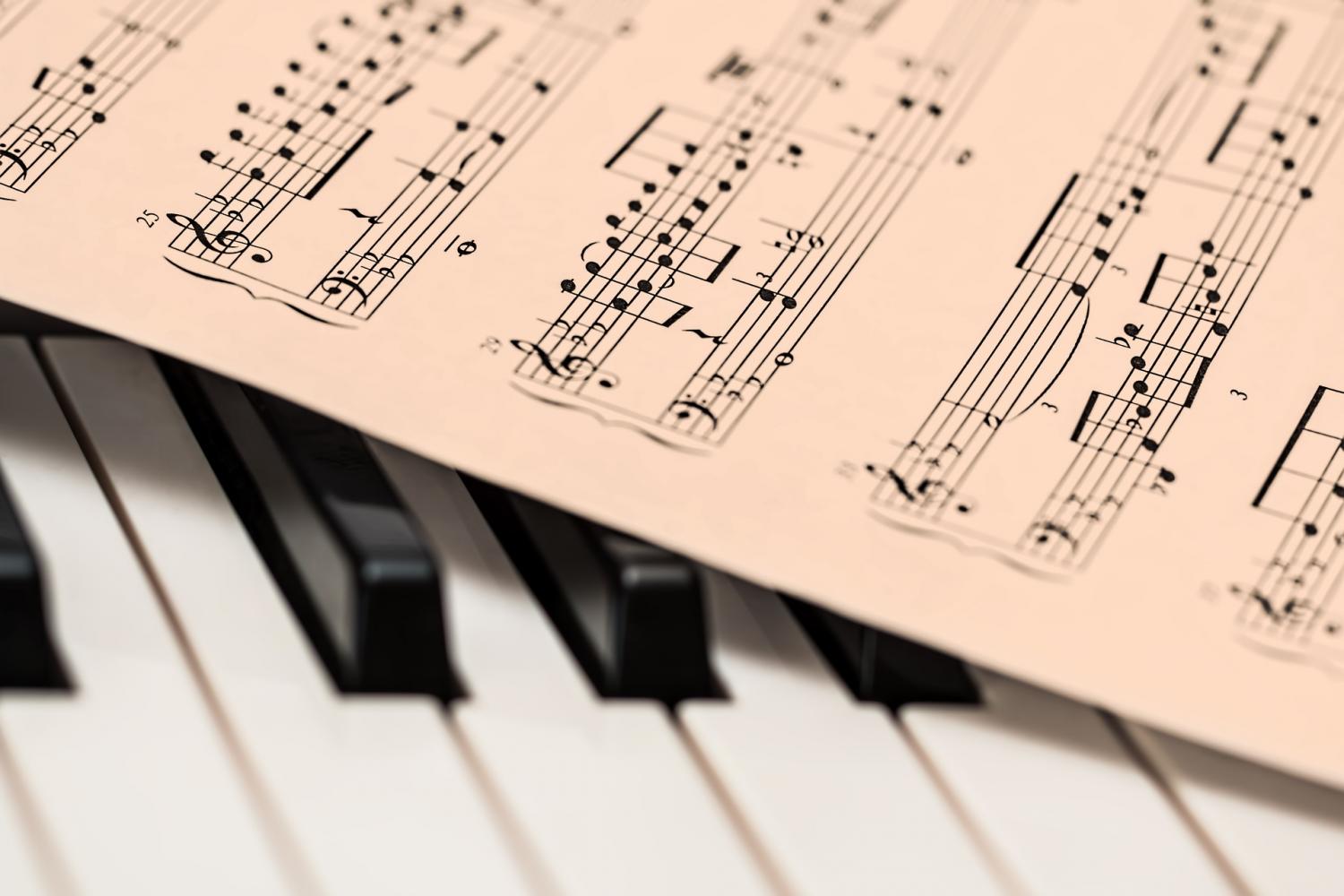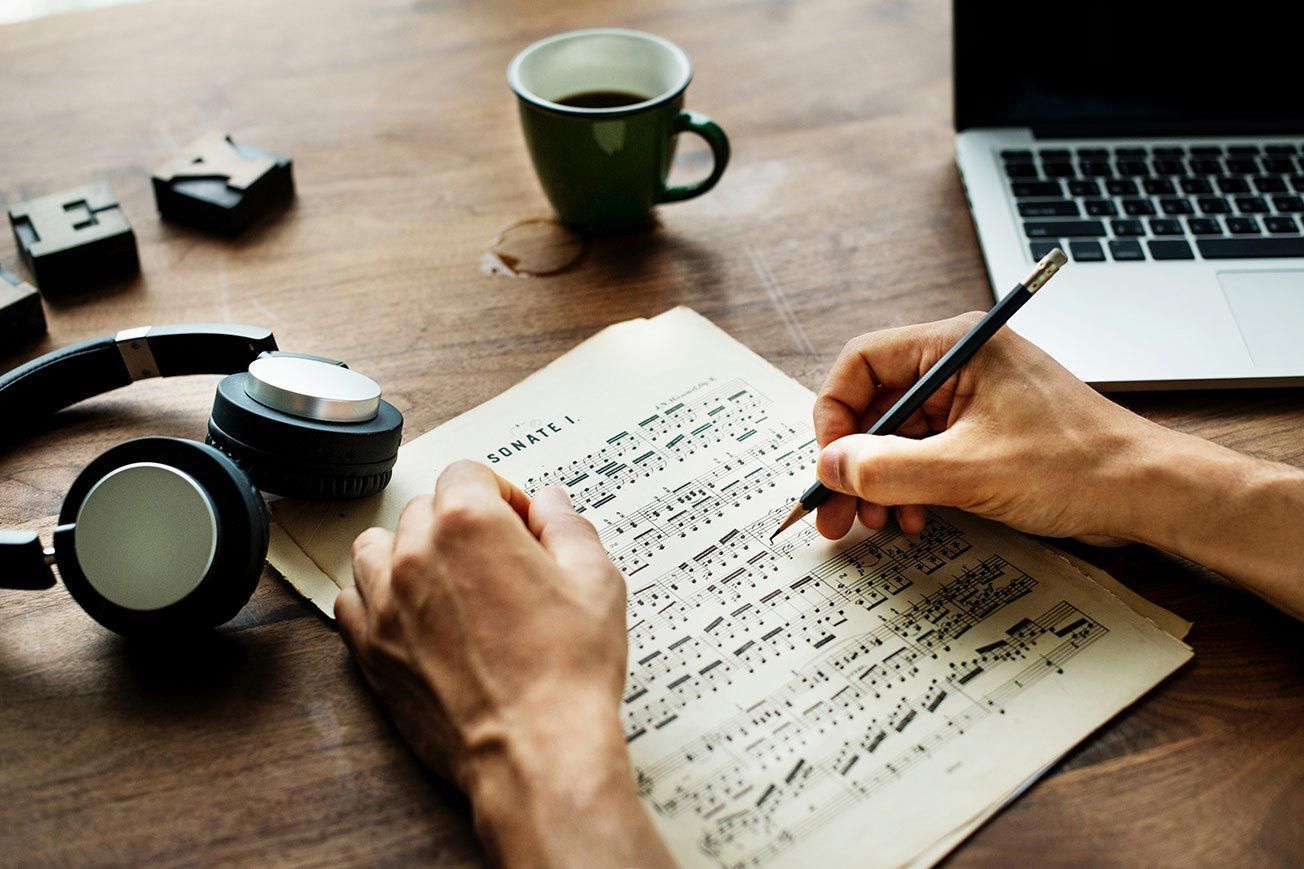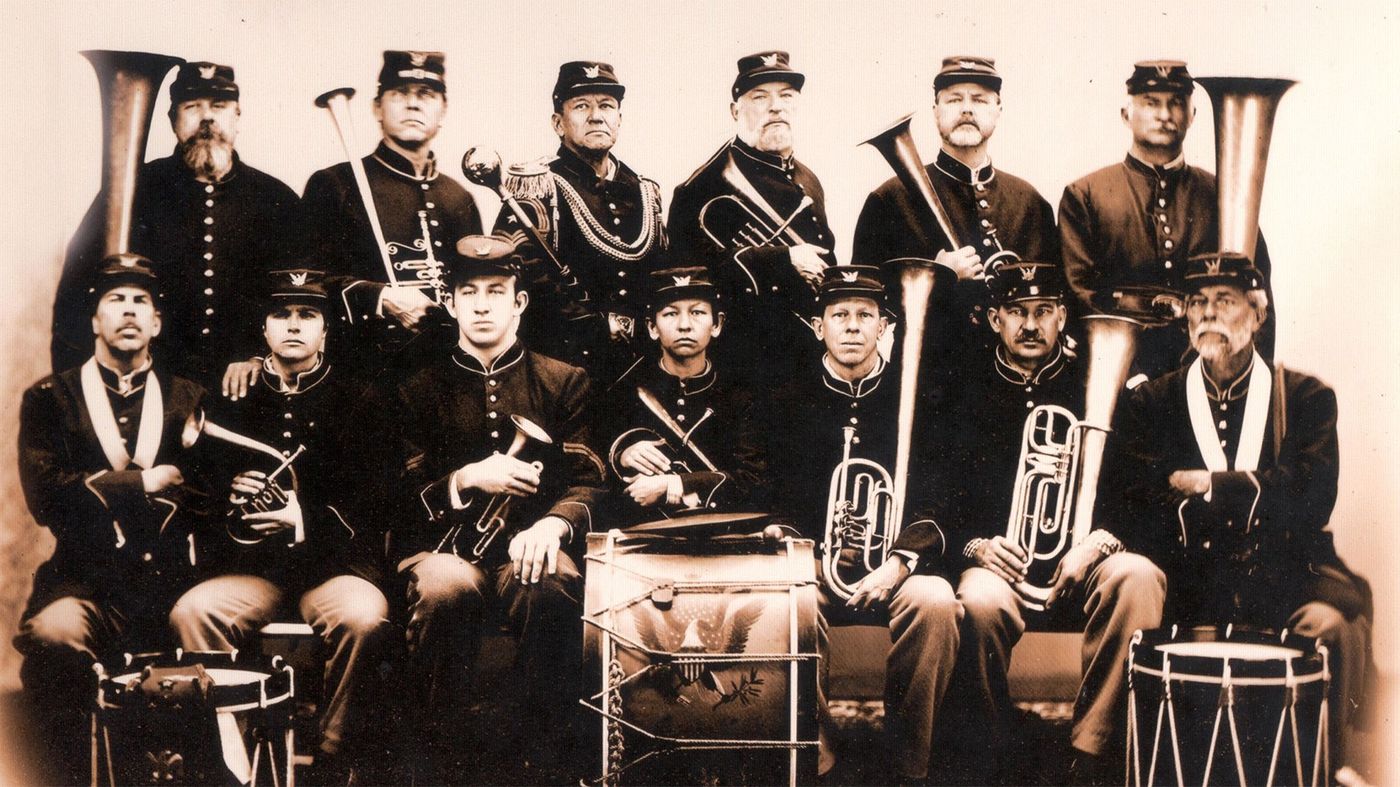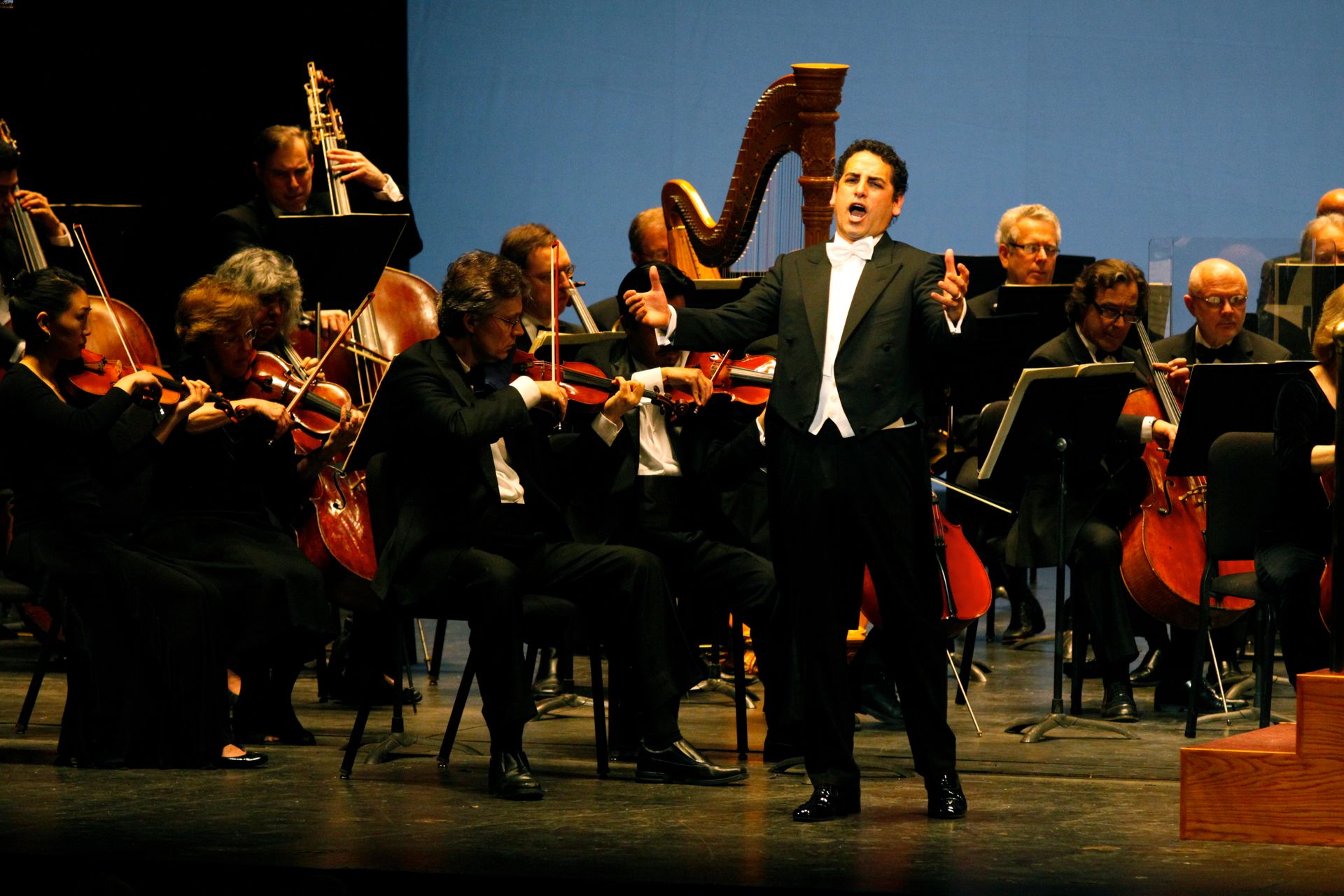Home>Events & Info>Music History>What Is Western Music History
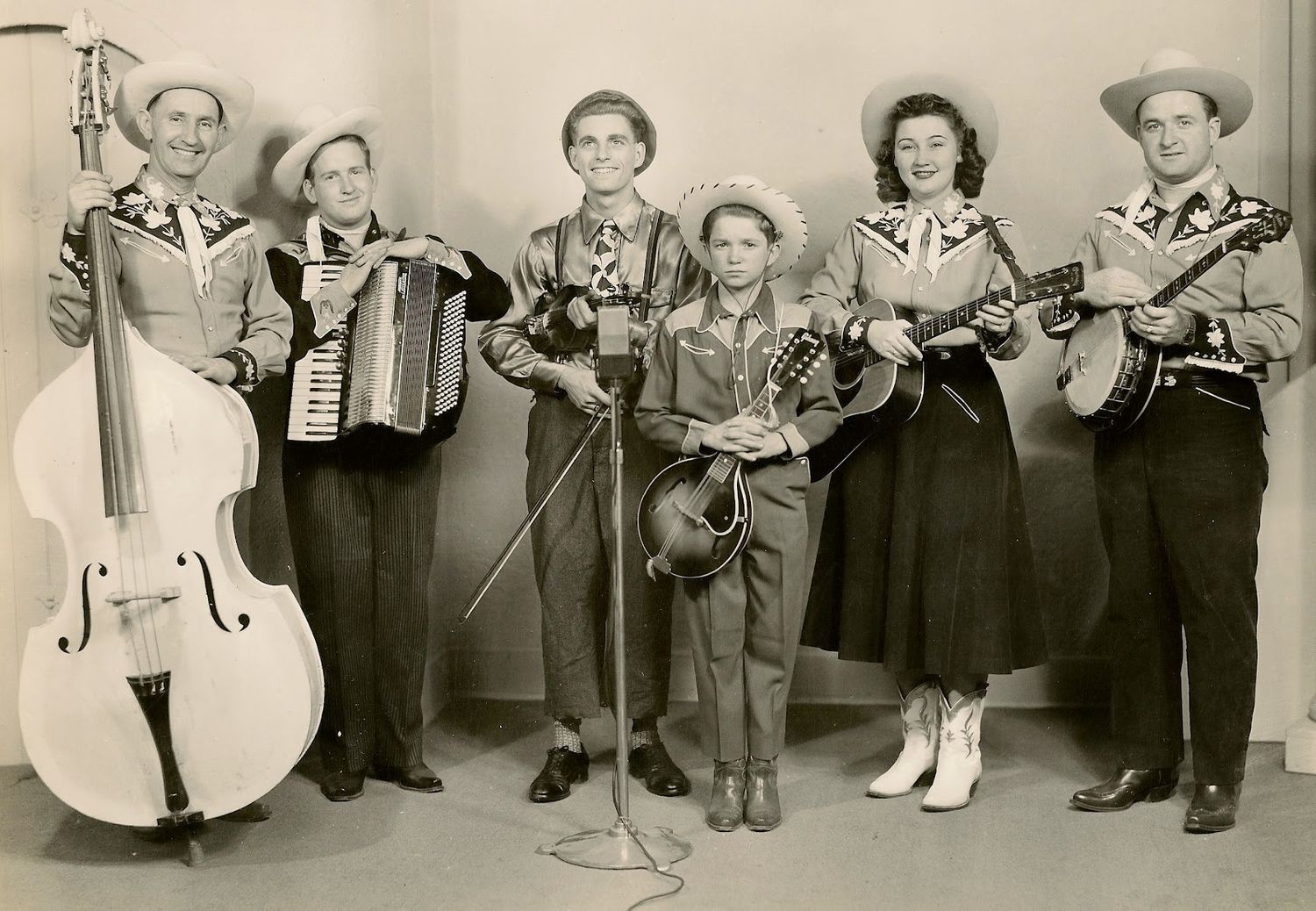

Music History
What Is Western Music History
Modified: January 22, 2024
Learn about the fascinating history of Western music, its evolution and key figures in this comprehensive guide. Explore the origins and development of music throughout time.
(Many of the links in this article redirect to a specific reviewed product. Your purchase of these products through affiliate links helps to generate commission for AudioLover.com, at no extra cost. Learn more)
Table of Contents
Introduction
Welcome to the fascinating world of Western music history! Over the centuries, Western music has evolved and shaped the cultural and artistic landscape of the world. From the enchanting melodies of Gregorian chant to the complex compositions of the Modern period, the history of Western music is a testament to the creative genius of countless composers and musicians.
Western music has its roots in ancient civilizations such as Greece and Rome, but it wasn’t until the Middle Ages that a distinct musical tradition began to emerge. This tradition was heavily influenced by the development of notation, which allowed musicians to document and transmit their compositions.
One of the most significant early forms of Western music is Gregorian chant. This monophonic vocal music, also known as plainchant, originated in the 9th century and was associated with the Catholic Church. Gregorian chant was characterized by its solemn and contemplative nature, with melodies that followed elaborate modal scales.
The Medieval period saw a flourishing of musical creativity, with the introduction of polyphony. Polyphony is the art of combining multiple melodic lines, and it laid the foundation for the intricate compositions of later periods. During this time, composers such as Hildegard von Bingen and Guillaume de Machaut made significant contributions to the development of Western music.
The Renaissance period, spanning the 14th to 17th centuries, witnessed a rebirth of classical ideals and a renewed interest in humanism. This era saw the rise of intricate choral music, characterized by rich harmonies and imitative counterpoint. Composers like Josquin des Prez and Giovanni Palestrina became highly regarded figures in the historical canon of Western music.
The Baroque period, from the late 16th to the early 18th century, brought about a dramatic shift in musical style. Baroque music was characterized by its ornate and elaborate compositions, featuring techniques such as terraced dynamics and basso continuo. Prominent composers of the Baroque era include Johann Sebastian Bach, Antonio Vivaldi, and George Frideric Handel.
The Classical period, spanning from the mid-18th to the early 19th century, marked a return to simplicity and clarity in musical compositions. This era was defined by its emphasis on balance, form, and elegance. Iconic composers of the Classical period include Wolfgang Amadeus Mozart, Ludwig van Beethoven, and Franz Joseph Haydn.
The Romantic period, from the early 19th to the early 20th century, ushered in a wave of emotional expression in Western music. Composers like Frederic Chopin, Franz Schubert, and Richard Wagner embraced individualism and pushed the boundaries of musical conventions. This era saw a surge in program music and symphonic poems, with compositions reflecting personal experiences and emotional narratives.
The Modern period, from the late 19th century to the present day, has been marked by an explosion of musical styles and experimentation. Composers such as Claude Debussy, Igor Stravinsky, and Arnold Schoenberg challenged traditional tonality and explored new avenues of musical expression. This period also saw the rise of jazz, blues, rock, and other popular genres that have had a profound impact on Western music and culture.
Throughout its rich and diverse history, Western music has evolved and adapted, reflecting the cultural, social, and artistic movements of its time. Its legacy continues to inspire and resonate with audiences around the world, captivating listeners with its power to evoke emotions and convey profound musical experiences.
The Origins of Western Music
The roots of Western music can be traced back to ancient civilizations such as Greece and Rome. In ancient Greece, music played a vital role in religious, social, and cultural activities. The Greeks believed in the power of music to invoke strong emotions and influence human behavior. Music was also seen as a means of connecting with the divine and achieving spiritual enlightenment.
During the Roman era, musical traditions from Greece were adopted and further developed. The Romans incorporated music into entertainment, with elaborate musical performances and concerts taking place in theaters and amphitheaters. Music was also an integral part of religious ceremonies and celebrations.
However, it was during the Middle Ages that a distinct Western musical tradition began to take shape. This period, spanning from the 5th to the 15th century, was characterized by the development of notation, which allowed musicians to write down and transmit their compositions.
One of the earliest and most significant forms of Western music during this time was Gregorian chant. Named after Pope Gregory I, this monophonic vocal music was used in Christian liturgical ceremonies. Gregorian chant was renowned for its tranquil and solemn nature, often utilizing a single melodic line sung in unison or by a choir.
As Western music continued to evolve, composers from different regions and cultures began to experiment with new musical forms and techniques. This led to the emergence of polyphony, the art of combining multiple melodic lines to create harmonies. The development of complex polyphonic compositions marked a significant shift in Western music and laid the foundation for future musical innovations.
Throughout the Medieval period, music played a central role in the cultural life of European society. It was closely tied to religious practices, with elaborate choral music being performed in cathedrals and monastic communities. Notable composers from this era include Hildegard von Bingen, a German abbess known for her expressive and visionary music, and Guillaume de Machaut, a French composer known for his polyphonic compositions.
The Renaissance period, which followed the Middle Ages, saw a rebirth of classical ideals and a renewed interest in humanism. This era witnessed a profound transformation in Western music, with composers embracing harmony, counterpoint, and musical expression. The rise of printing press technology made it easier for musical scores to be disseminated, leading to a wider distribution of music.
Composers of the Renaissance period, such as Josquin des Prez and Giovanni Palestrina, created intricate choral works characterized by their rich harmonies and contrapuntal textures. This era also saw the emergence of the madrigal, a secular vocal composition that expressed a range of emotions through vivid word painting and expressive melodies.
The origins of Western music laid the groundwork for the remarkable developments that followed in subsequent periods. Building upon the foundations of ancient civilizations and the musical innovations of the Middle Ages and Renaissance, Western music continued to evolve and diversify, showcasing the boundless creativity of composers and musicians throughout history.
Gregorian Chant
Gregorian chant, also known as plainchant or plainsong, is one of the oldest and most influential forms of Western music. It originated in the 9th century and was closely associated with the Catholic Church. Named after Pope Gregory I, who was credited with organizing and codifying the chants, Gregorian chant played a significant role in medieval religious ceremonies and was an integral part of the liturgy.
Characterized by its monophonic texture, Gregorian chant consists of a single melodic line sung in unison or by a choir. The melodies were typically modal, following specific scales known as church modes. These modes gave the chants a distinct and contemplative quality, creating a solemn atmosphere in religious rituals.
Gregorian chant was primarily sung in Latin and served as a means of conveying the sacred texts of the Christian faith. The texts were usually derived from the Bible and religious writings, such as the Psalms and hymns. The simplicity and purity of the chant allowed the faithful to focus on the words and their spiritual significance.
One notable aspect of Gregorian chant is its rhythm. Unlike the metered rhythms found in later musical forms, Gregorian chant has a free-flowing and flexible rhythm. This rhythmic flexibility enabled the singers to adapt the chant to suit the natural contours of the Latin language and to emphasize the meaning of the text through subtle melodic nuances.
Gregorian chant was performed by monks and clerics within the walls of monastic communities and cathedrals. The melodies were handed down orally from generation to generation, ensuring the preservation of this ancient musical tradition. The music was often memorized, and the passing down of the chants was seen as a sacred duty.
One of the unique features of Gregorian chant is its use of neumes, early notational symbols that provide general guidance on melodic contours. However, these neumes did not indicate precise pitches or rhythms, leaving much of the interpretation to the performers. This allowed individual singers and choirs to imbue the chants with their own expressions and spiritual interpretations.
Gregorian chant continued to be an important part of the Catholic liturgy throughout the Middle Ages and beyond. Its influence can be seen in later Western music, particularly in the development of musical notation and the establishment of melodic conventions.
Today, Gregorian chant is still performed and appreciated for its ancient beauty and spiritual resonance. Its haunting melodies and transcendent aura continue to captivate audiences, offering a glimpse into the rich tapestry of Western music history.
Medieval Period
The Medieval period, spanning from the 5th to the 15th century, marked a significant era in the history of Western music. This period, also known as the Middle Ages, witnessed the development of new musical forms and techniques that laid the foundation for Western music as we know it today.
During the early Medieval period, music was closely tied to the Christian Church. It played a central role in religious ceremonies, with chants and hymns being sung in monasteries and cathedrals. Gregorian chant, with its serene and melodic compositions, was the dominant form of musical expression during this time.
However, as the Middle Ages progressed, a new form of music began to emerge – polyphony. Polyphony is the art of combining multiple melodic lines to create harmonies. This revolutionary development in Western music opened up limitless possibilities for composition and musical expression.
The rise of polyphonic music was closely linked to the development of musical notation. With the ability to notate multiple voices on a single staff, composers could now accurately document and transmit intricate musical compositions. This advancement paved the way for the flourishing of polyphony in the later Medieval period.
The Notre Dame School, centered around the Notre Dame Cathedral in Paris, was at the forefront of this musical revolution. Composers like Leonin and Perotin were notable figures within this school, innovating new techniques such as rhythmic notation and organum. Organum refers to the practice of adding a second voice to an existing Gregorian chant, creating a rich and textured musical experience.
As polyphony continued to evolve, composers began exploring increasingly complex musical structures. The development of motets, which combined multiple voices singing different texts simultaneously, was a hallmark of the late Medieval period. Composers such as Machaut and Dufay expanded upon these polyphonic techniques, incorporating intricate rhythms, melodic ornamentation, and syncopation.
Medieval music was not limited to sacred compositions. Secular music also flourished during this period, with troubadours and trouveres composing songs about courtly love, chivalry, and tales of knights and fair maidens. These songs were typically performed with simple accompaniments on instruments such as the lute, harp, and vielle.
Throughout the Medieval period, music served as a form of entertainment, worship, and storytelling. It played a central role in the cultural fabric of European society, connecting people across different social classes and providing a means of expression and communication.
The music of the Medieval period, with its mesmerizing chants, soaring polyphony, and captivating secular songs, offers a fascinating glimpse into the rich tapestry of Western music history. Its contributions paved the way for the musical innovations that would emerge in the Renaissance and beyond, leaving an indelible mark on the evolution of Western musical traditions.
Renaissance Period
The Renaissance period, spanning from the 14th to the 17th century, was a time of immense cultural and artistic transformation. This era witnessed a renewed interest in ancient Greek and Roman ideals, a revival of humanism, and a flourishing of the arts, including music.
During the Renaissance, music underwent significant changes and innovations. Composers looked back to Greek theories of music, exploring harmony, counterpoint, and complex polyphony. The texture of music became more intricate and rich, with multiple melodic lines interweaving to create harmonies.
One of the most important developments in Renaissance music was the rise of vocal polyphonic music. Composers such as Josquin des Prez, Palestrina, and Orlando di Lasso created intricate choral works characterized by their smooth vocal lines and balanced harmonies. The aim was to create music that conveyed the text clearly and beautifully while evoking emotional responses from the listeners.
The advent of music printing with movable type in the 16th century revolutionized the dissemination of music. This innovation allowed composers to share their works more widely, leading to a growth in both the availability and diversity of music. The printing press played a crucial role in the spread of Renaissance music across Europe.
Choral music played a significant role in Renaissance society. The Catholic Church continued to be a patron of music, and the elaborate polyphonic masses and motets were performed in cathedrals and chapels. The music was often composed for specific occasions or to honor important figures, such as rulers or religious leaders.
Secular music also thrived during the Renaissance period. Madrigals, which were expressive choral songs set to poetic texts, gained popularity among aristocratic circles. These songs often depicted themes of love, nature, and courtly life, and they showcased the close relationship between music and poetry.
Instrumental music also saw advancements during the Renaissance. The popularity of the viol and the rise of consort music led to the development of instrumental ensembles. Composers such as Giovanni Gabrieli and William Byrd composed music specifically for instruments, showcasing the expressive capabilities of these instruments.
The Renaissance period witnessed a remarkable convergence of advancements in music theory, composition, and performance. The flourishing of humanist ideals and the focus on individual expression led to a new era of musical creativity and experimentation.
By embracing the ideals of the Renaissance, composers of this era pushed the boundaries of musical conventions, exploring new forms and techniques. This period laid the foundation for the Baroque era and subsequent musical developments, leaving a lasting impact on Western music history.
Baroque Period
The Baroque period, spanning from the late 16th to the early 18th century, was a dynamic era in Western music history. This period was characterized by its ornate and elaborate musical compositions, dramatic contrasts, and a richly expressive style that captivated audiences.
Baroque music was deeply influenced by the artistic and intellectual movements of the time. It reflected the grandeur and opulence of the Baroque period, with compositions that aimed to evoke strong emotions and create a sense of theatricality and spectacle.
One of the defining features of Baroque music was its use of terraced dynamics. Instead of gradual changes in volume, Baroque composers employed sudden shifts between loud and soft, creating dramatic contrasts that heightened the emotional impact of the music.
Another hallmark of the Baroque period was the practice of basso continuo. Basso continuo, also known as figured bass, involved the use of a bass line performed by a bass instrument (such as cello or bassoon) along with a keyboard instrument (such as harpsichord or organ) playing improvised chords. This provided a harmonic foundation and allowed for embellishments and improvisations within the framework of the composition.
At the forefront of the Baroque period were influential composers such as Johann Sebastian Bach, Antonio Vivaldi, and George Frideric Handel. Bach’s intricate polyphonic compositions, Vivaldi’s virtuosic violin concertos, and Handel’s majestic oratorios are just a few examples of the diverse and remarkable music that emerged during this time.
The Baroque period witnessed the establishment of opera as a prominent musical genre. Opera combined music, drama, and visual elements to create elaborate and theatrical productions. Composers such as Claudio Monteverdi and Henry Purcell were key figures in the development and popularization of opera during the Baroque period.
Choral music also flourished during this era, with the emergence of grand choral works such as the Mass, oratorio, and cantata. These large-scale compositions featured elaborate vocal and instrumental forces, allowing for captivating musical storytelling and emotional depth.
Instrumental music continued to evolve during the Baroque period. The emergence of the concerto, with its soloist accompanied by an orchestra, showcased the virtuosity and technical abilities of individual musicians. This genre produced iconic works such as Bach’s Brandenburg Concertos and Vivaldi’s Four Seasons.
The Baroque period left a lasting impact on Western music history by fostering innovation, virtuosity, and the exploration of new musical ideas. Its bold, expressive style laid the foundation for subsequent musical periods, and its rich legacy continues to captivate audiences today.
Classical Period
The Classical period, spanning from the mid-18th to the early 19th century, was a time of remarkable artistic and musical achievements. This era witnessed a shift in musical style, marked by clarity, balance, and elegance, as well as a renewed interest in classical Greek and Roman ideals.
One of the defining characteristics of the Classical period was the emphasis on form and structure. Composers of this era, such as Wolfgang Amadeus Mozart, Ludwig van Beethoven, and Franz Joseph Haydn, aimed to create music that was tightly organized and characterized by clear-cut melodic lines, balanced phrasing, and distinctive thematic material.
The symphony, a large orchestral composition typically consisting of four movements, rose to prominence during the Classical period. Composers like Haydn and Mozart were instrumental in developing and popularizing the symphony, utilizing its dynamic range and expressive possibilities to captivate audiences.
The concerto also thrived during this period, featuring a solo instrument accompanied by an orchestra. Soloists showcased their virtuosity and expressive capabilities through elaborate and technically demanding compositions. Mozart’s piano concertos and Beethoven’s violin concerto represent some of the most significant works of the Classical concerto genre.
The Classical period also witnessed the development of chamber music, including string quartets and piano sonatas. These intimate and refined compositions were often composed for small ensembles and intended for private performances. Haydn’s string quartets and Mozart’s piano sonatas are shining examples of the mastery and beauty found in Classical chamber music.
During the Classical period, public concerts became more commonplace, with composers and performers seeking to engage and entertain larger audiences. This shift led to a greater emphasis on melodious and accessible music that could be appreciated by a wide range of listeners.
While Classical music is often associated with the formal structures and refined etiquette of the era, it also explored emotional depth and expression. Composers experimented with dynamics, accents, and articulations to convey a range of emotions within the controlled framework of Classical style.
The Classical period also witnessed advancements in musical technology. The piano, with its dynamic range and expressive capabilities, gained popularity as a versatile and powerful instrument. Innovations in piano design and construction further expanded the possibilities for musical expression.
The legacy of the Classical period is far-reaching, as it laid the foundation for musical developments in subsequent periods. Its emphasis on balance, clarity, and structural integrity influenced generations of composers, and its compositions continue to be celebrated for their timeless beauty and intellectual depth.
Romantic Period
The Romantic period, spanning from the early 19th to the early 20th century, marked a profound shift in Western music history. This era was characterized by a strong emphasis on individualism, emotion, and artistic freedom, as composers sought to express their deepest thoughts and feelings through music.
During the Romantic period, composers pushed the boundaries of musical conventions and embraced a more expressive and personal style. They sought to evoke powerful emotions and create music that spoke directly to the hearts and souls of the listeners.
One of the defining characteristics of Romantic music was its focus on individuality and subjectivity. Composers such as Ludwig van Beethoven, Frédéric Chopin, and Franz Schubert infused their compositions with personal narrative and emotional resonance. Their works often reflected their own experiences, personal philosophies, and unique artistic voices.
The orchestra played a central role in the Romantic period, with composers expanding its size and power to achieve grandiose and passionate effects. Symphonies during this era, such as those by Pyotr Ilyich Tchaikovsky and Gustav Mahler, became epic and dramatic in scope, exploring a wide range of emotions and employing rich harmonic palettes.
Another hallmark of the Romantic period was the rise of program music, music that was inspired by or based on extramusical ideas, such as stories, poems, or works of visual art. Composers like Richard Strauss and Hector Berlioz created symphonic poems and tone poems, which were orchestral works that depicted specific narrative or pictorial subjects.
Alongside symphonic and programmatic works, the piano became a favored instrument for Romantic composers. Virtuosic piano compositions by Franz Liszt and Frédéric Chopin showcased the expressive capabilities of the instrument, revealing its dramatic range and technical prowess.
The opera also reached new heights during the Romantic period. Composers such as Giuseppe Verdi and Richard Wagner revolutionized the genre, infusing their operas with intense emotional depth, vivid storytelling, and groundbreaking musical innovations.
Romantic music often featured rich harmonies, chromaticism, expansive melodic lines, and lush orchestrations. Composers experimented with new tonal colors and techniques, pushing the boundaries of traditional tonality and exploring new harmonic progressions.
The Romantic period also saw the emergence of nationalistic movements in music, where composers drew inspiration from their homeland’s folk music, history, and cultural identity. Composers such as Bedřich Smetana and Jean Sibelius incorporated folk melodies and nationalistic themes into their works, celebrating their countries’ unique musical traditions.
The Romantic period not only revolutionized the musical landscape but also had a profound impact on the way society viewed and experienced music. It paved the way for musical innovations of the 20th century and beyond, leaving an enduring legacy of emotional expression, individuality, and artistic freedom.
Modern Period
The Modern period, which began in the late 19th century and continues to the present day, represents a diverse and ever-evolving era in Western music history. This period marked a departure from the traditional tonal system and embraced new forms of musical expression, experimentation, and innovation.
Composers of the Modern period sought to break away from the constraints of tonality and push the boundaries of musical conventions. They explored dissonance, unconventional scales, and new harmonic structures, challenging traditional notions of melody and harmony.
One of the defining characteristics of the Modern period is its eclectic and diverse range of styles and genres. Various movements emerged, each with its own distinctive sound and artistic philosophy. From the impressionistic compositions of Claude Debussy and Maurice Ravel to the avant-garde works of Arnold Schoenberg and Igor Stravinsky, the Modern period witnessed a multitude of musical voices.
In the early 20th century, composers like Debussy and Ravel sought to create music that captured the essence of fleeting impressions and emotions. Their compositions employed vivid harmonies, unconventional scales, and rich textures to evoke vivid imagery and explore the nuances of human experience.
Schoenberg, together with his disciples Alban Berg and Anton Webern, brought about a revolutionary approach to composition known as atonality. They dismantled traditional tonal frameworks and embraced twelve-tone serialism, a method that organized all twelve notes of the chromatic scale into a tightly structured system.
The experimentation of the Modern period extended to rhythm and form as well. Composers like Stravinsky challenged traditional notions of meter and explored complex rhythms and asymmetrical structures in works such as “The Rite of Spring”, which shocked audiences with its unconventional use of dissonance and polyrhythms.
The Modern period also saw the rise of jazz, blues, and popular music genres that had a profound influence on Western music. Artists like Louis Armstrong, Duke Ellington, and Billie Holiday introduced new rhythmic and harmonic elements that revolutionized the musical landscape.
Technology played a significant role in shaping the sound of the Modern period. The invention and development of electronic and computer-based instruments expanded the possibilities for sound manipulation and composition. Musicians began incorporating electronic elements, tape recordings, and synthesized sounds into their works, creating new sonic landscapes.
In recent years, the Modern period has witnessed a blending of various musical styles and a resurgence of interest in tonality. Composers continue to explore new avenues of musical expression, combining traditional and innovative techniques to create works that defy categorization.
The Modern period embodies the spirit of experimentation, diversity, and artistic exploration. It reflects the ever-changing social, cultural, and technological landscape of the world, pushing the boundaries of what is considered musical and expanding our understanding of the power and possibilities of sound.
Popular Western Music Genres
Alongside the classical and art music traditions, Western music is also known for its vibrant and diverse popular music genres. These genres have shaped the cultural landscape and have been embraced by listeners around the world. From the catchy rhythms of rock and roll to the soulful melodies of blues and the infectious beats of hip-hop, popular Western music genres continue to evolve and captivate audiences.
Rock and roll emerged in the mid-20th century and quickly became a global phenomenon. Rooted in the fusion of African-American rhythm and blues with elements of country and western music, rock and roll was characterized by its energetic and rebellious nature. Icons like Elvis Presley, The Beatles, and Led Zeppelin propelled the genre to new heights, influencing subsequent generations of musicians and spawning numerous subgenres, including punk, alternative, and indie rock.
Blues, with its soulful and deeply expressive qualities, is another significant genre in the Western music tradition. Originating in African-American communities in the American South, the blues genre combines elements of African music, spirituals, and work songs. Blues artists such as B.B. King, Muddy Waters, and Robert Johnson have left an indelible mark on the musical landscape, inspiring generations with their heartfelt lyrics and soul-stirring melodies.
In the early 20th century, jazz took shape as an innovative and improvisational genre. Emerging out of African-American communities, jazz incorporated elements of blues, ragtime, and European classical music. Artists like Louis Armstrong, Duke Ellington, and Miles Davis revolutionized the genre, pushing the boundaries of improvisation and harmonic experimentation. Jazz continues to evolve, with subgenres such as bebop, cool jazz, and fusion exploring new sonic territories.
In the latter half of the 20th century, the rise of electronic music transformed the popular music landscape. Dance music genres, such as disco, techno, house, and EDM (electronic dance music), emerged as prominent forms of expression, characterized by their infectious beats and use of synthesizers. These genres have become synonymous with dance culture and have a strong influence on contemporary pop music.
Hip-hop, born from African-American and Afro-Caribbean communities in the Bronx, New York, in the 1970s, revolutionized the music scene with its rhythmic poetry and innovative use of sampling. Hip-hop encompasses elements of rap, DJing, graffiti, and breakdancing, serving as a powerful platform for social commentary and self-expression. Artists like Grandmaster Flash, Tupac Shakur, and Kendrick Lamar have used hip-hop as a means to address social and political issues.
Country music, rooted in the folk traditions of rural America, has also made a significant impact on popular Western music. With its storytelling lyrics and distinctive instrumentation, including the twang of the acoustic guitar and the heartfelt sound of the pedal steel, country music has resonated with audiences worldwide. Artists like Johnny Cash, Dolly Parton, and Garth Brooks have become iconic figures within the genre.
The realm of popular Western music is vast and ever-evolving, with numerous other genres and subgenres, including pop, R&B, soul, reggae, metal, and more. Each genre carries its own unique sound, cultural influences, and traditions, contributing to the rich tapestry of Western music and connecting people across borders and generations.
Conclusion
Exploring the rich and diverse history of Western music reveals a captivating journey through time. From the haunting melodies of Gregorian chant in the Medieval period to the electrifying beats of hip-hop in the Modern era, Western music has continually evolved and pushed the boundaries of artistic expression.
Throughout the centuries, composers and musicians have left an indelible mark on Western music, each period building upon the foundations laid by their predecessors. The origins of Western music in ancient civilizations like Greece and Rome laid the groundwork for musical developments in the Middle Ages, Renaissance, Baroque, Classical, Romantic, and Modern periods.
Each era introduced its own stylistic elements, compositional techniques, and genres. Gregorian chant, polyphony, symphonies, opera, piano concertos, and programmatic works are just a few examples of the richness and versatility of Western music. The emergence of popular genres such as rock and roll, blues, jazz, hip-hop, and electronic music further demonstrate the ever-evolving nature of Western music.
Western music has not only served as a form of entertainment but also as a reflection of human experiences, emotions, and cultural shifts throughout history. It has provided a means of storytelling, a source of comfort and catharsis, and a platform for social and political commentary.
As the world becomes increasingly interconnected through advancements in technology, Western music continues to evolve. It embraces new influences, incorporates global musical traditions, and explores innovative techniques and technologies. From classical symphony halls to the digital platforms of streaming services, Western music continues to captivate and engage audiences of all backgrounds.
Whether it is the intricate polyphony of the Middle Ages, the emotional depth of the Romantic period, or the ever-evolving sounds of the Modern era, Western music holds a profound place in our cultural heritage. It is a testament to the power of human creativity, a reflection of our shared experiences, and a universal language that transcends time and borders.
So, let us celebrate the rich tapestry of Western music, seeking inspiration in its melodies, harmonies, and rhythms. Let us continue to explore its complexities, appreciate its diversity, and embrace its ability to move and unite us. Through the lens of Western music, we gain a deeper understanding of our collective past, present, and future, and we forge connections that span across generations and cultures.

